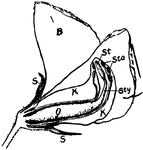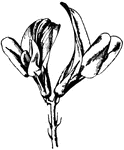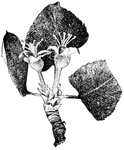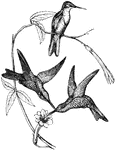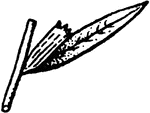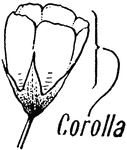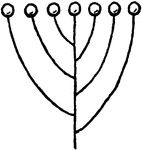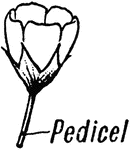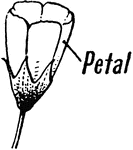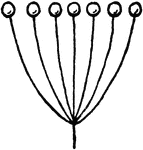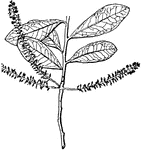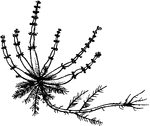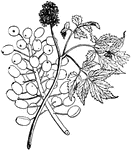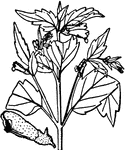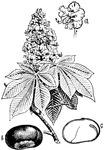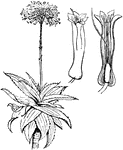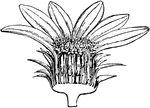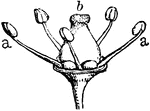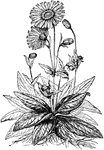
Passeres
An assortment of passeres, one order of birds. The legs, feet, and talons are generally smaller than…
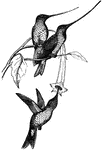
Hummingbirds
A group of humming birds with particularly long and narrow beaks, well-adapted for sipping nectar from…

Raceme
A flower cluster with the flowers stalked and comming off a commonand more or less elongated axis.

Utricularia
No leaf-sheaths present; flower cluster consisting of one to several showy, irregular, yellow, or purple…
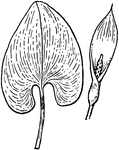
Pontederia
Leaves with blunt lobes; flower conspicuous, purple, not on a fleshy axis enclosed in a leaf-like sheath.

Agrimensor
"Agrimony (Agrimonia Eupatoria) showing branch, flowering spray, and fruit."-Whitney, 1902
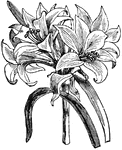
Belladonna Lily
"Of genus Amaryllis- A genus of bulbous plants, natural order amaryllidacæ, with large, bright…
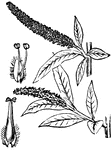
Willow
"Ament-A kind of inflorescence consisting of unisexual apetalous flowers growing in the axils of scales…
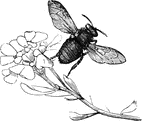
Drone Bee
"The working bee, for collecting wax, enters a flower, the stamens of which are loaded with pollen.…

Working Bees
""The working bee, for collecting wax, enters a flower, the stamens of which are loaded with pollen.…

Aquilegia
"Inflorescence of Aquilegia vulgaris (garden columbine). a, flower; b, same, cut vertically; c, pistils."-Whitney,…

Earwigs
"The Foficulina includes the Earwig, Forficula, which appears to live principally upon vegetable…
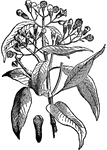
Cloves
"Cloves are a very pungent and aromatic spice, the dried flower-buds of a tree a native of the Molucca…
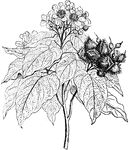
Arnotto
"Arnotto-extremely common in Jamaica and other parts of the West Indies, and has been introduced into…
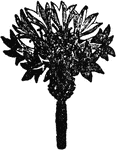
Corn flower
"The Corn flower is a well-known composite weed of cornfields, universally known and admired for the…
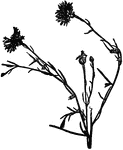
Corn flower
"The Corn flower is a well-known composite weed of cornfields, universally known and admired for the…
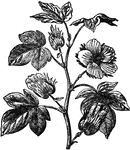
Cotton Plant
"Cotton is a vegetable hair or filament constituting the wing of the seed of the different species of…
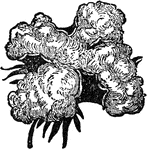
Cotton Flower
"Cotton is a vegetable hair or filament constituting the wing of the seed of the different species of…
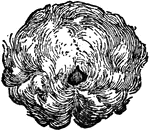
Cotton Flower
"Cotton is a vegetable hair or filament constituting the wing of the seed of the different species of…

Daffodil
"Daffodil is the popular name of a plant which is one of the earliest ornaments of our gardens, being…

Double Tuberose
"Tuberose (Polianthus) is a genus of plants of the natural order Liliaceæ. The plant is in high…

White Water Lily
"The Water Lily is an exogenous aquatic plant including eight genera, and all possessing submerged root…

Lady's Slipper
"Lady's Slipper is a genus of plants. The genus is remarkable for the large inflated lip of the corolla.…
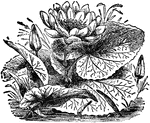
Egyptian Water Lily
"Lotus is a name given to various flowers, including several beautiful species of water lily, especially…

Marsh Mallow
"The Marsh Mallow is a softly pubescent plant, with axillary cymes of large rosy leaves. a,…

Myrtle Flower
"Myrtle is a genus of plants, natural order Myrtaceæ, consisting of aromatic trees or shrubs,…
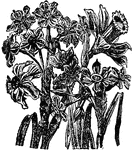
Narcissus
"Narcissus is an extensive genus of bulbous plants. The species are numerous, and from their hardiness,…
